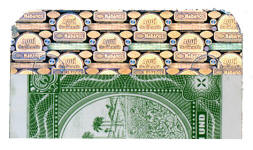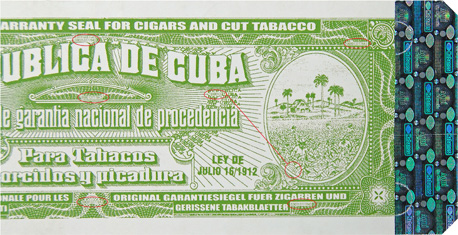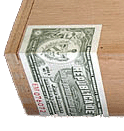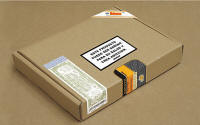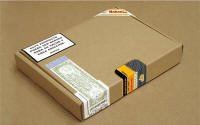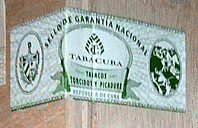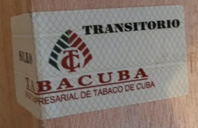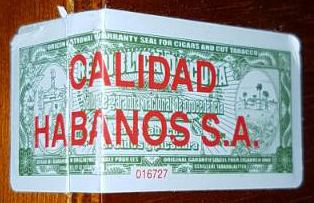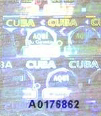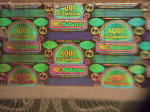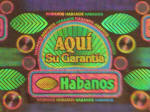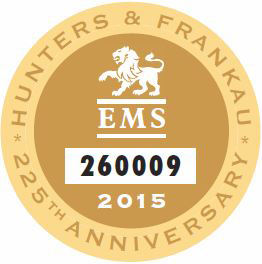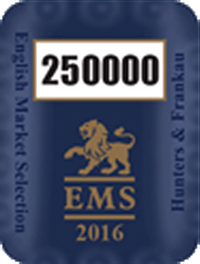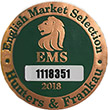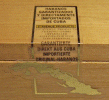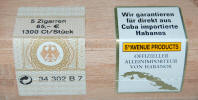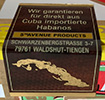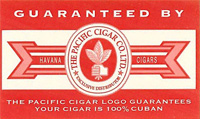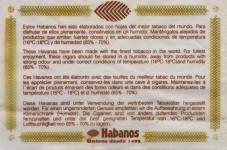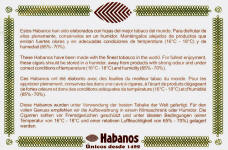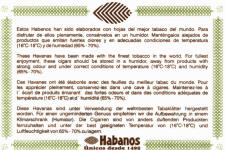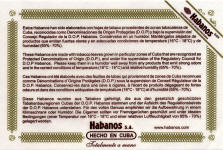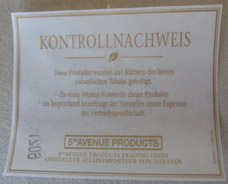Individual Cigars
Individual cigars can be finished in various ways:
Plain Cigars
Cigar bands (Anillas) were introduced in Cuba circa 1870s. Since mid-2006, all Cuban cigars have bands applied. Prior to 2006, cigars in slide lid boxes were sometimes offered unbanded.
Limited and special releases usually have a second band. Commemorative issues may have a special band or a second band. On rare occasions, the bands may be numbered. From 2016 onwards, an number of special release and high-end regular production cigars have worn foot bands in addition to their regular band.
Starting around 2010, some newer band designs have introduced security features including holograms, microprinting, serial numbers, and features that fluoresce when exposed to ultra-violet light.
Cellophane Sleeved
Cellophane sleeving of cigars commenced in Cuba in the mid-1930s and until c1992, most Cuban cigars (even Cohibas) were available in cellophane sleeves.
Since c1992 the use of cellophane sleeving has been restricted to machine-made cigars, which were discontinued by Habanos c2002/2003. Cellophane is now used only for ICT machine-made Puritos.
Cedar Wrapped
Cigars are sometimes wrapped in a cedar sheet. This has the benefit of protecting the cigar from damage due to handling, regulating the humidity within and around the cigar, and adding a cedar aroma to the cigar while excluding other external aromas.
Given that only a small number of cigars are deemed worthy of this treatment, it seems that its main purpose may be as a marketing differentiator.
Tissue Wrapped
Only one brand is currently available tissue-paper wrapped, the Fonseca.
The wrapping adds nothing and provides negligible protection.
The tissue may be left on the cigars in a humidor, but must be removed before smoking.
Aluminium Foil Wrapped
The use of true aluminium foil (for wrapping cigars) started in the 1920s but because of the high cost to hand-wrap the cigars, its general use was replaced with cellophane sleeves (except for premium or special cigars) by the 1940s.
Current aluminium foil is actually a naturally silver coloured aluminium paper foil.
It can be either plain or have an embossed pattern (stars etc.) and can fully or partially wrap the cigar.
Gold Foil Wrapped
As above but a gold coloured aluminium paper foil is used.
The foil is either plain or patterned.
Cedar Wrapped & Cellophane Sleeved
Cellophane sleeved cedar wrapped cigars generally indicate machine-made cigars.
This form of packaging has been discontinued.
Aluminium Tubes
Aluminium tubes first appeared in December 1933, initially with the H. Upmann brand. They were an immediate success, however disappeared in the late 1930s due to wartime aluminium shortages. By the 1950s they were common again and are used by many brands today.
Some cigar releases are available exclusively in aluminium tubes, while other releases are available either with or without tubes.
Tubes help to preserve cigars from physical damage and short-term drying out. Habanos S.A. recommends removing cigars from their tubes if storing in a humidor, although Min Ron Nee advocates leaving cigars in their tubes for improved (but slower) aging. Tubes have a thin cedar-sheet lining.
Since 2006, Habanos SA has been extending the available tube range in their major brands, using both recoloured standard tubes and a new premium style tube. Some of the minor brands are having the tubes withdrawn.
The standard tubes have a bottom screw-cap. The older style tubes generally have black text printed on the natural silver background while the newer style tubes have the same screw-cap construction but with more colourful tube colour and printing.
The new premium tubes have a twin tube construction, with a top, friction pull-apart section. They are usually printed in multiple colours.
Humidified Tubes
In 2008 a super-premium Humidifier Tube was released for the Travel Retail Selection pack.
It incorporates a rechargeable humidifier sponge within a double aluminium chamber, a clear plastic upper section and a cap that incorporates a reusable cigar punch.
Glass Tubes
Glass tubes were introduced circa mid-1940s and became common in the 1950/1960s. Their use was discontinued by the mid-1970s.
Glass tubes have a plastic push-in cap.
Plastic Tubes
Plastic Tubes can be either clear or opaque, with push-top caps.
Their current use is limited to ICT machine-made cigars.
Cedar Tubes
The cedar timber tube was a special release tube once used by the discontinued Davidoff brand, and in a small number of pre-Revolution cigars.
Small Slide Lid Boxes
A small solid or cedar plywood timber slide lid box, usually containing a single round cigar. Also known as a "coffin box". In some instances, these are varnished.
These boxes are packed in a 3 or 5 pack dress or slide lid box. Usually reserved for expensive or large cigars.
Culebras
Culebras ("snakes" in Spanish) refers to three cigars twisted together in a tight intertwined spiral. Culebras is also the Cuban factory name for specific sized vitola.
Only three brands have produced Culebras since 1960. These were machine-made cigars. Early packaging was a dress box of 25 containing eight spirals of three plus a single straight cigar, to make up the total of 25 cigars.
The modern Culebras are handmade and each spiral bundle is packed in a small slide lid box.
Cellophane Bundles
Cigars packed in cellophane wrapped bundles are now restricted to cheaper short-filler cigars.
Bundles normally consist of 25 cigars.
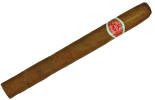
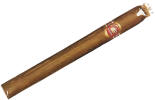
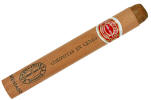
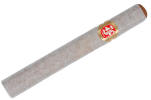
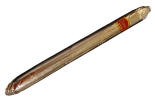
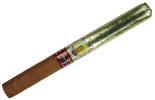
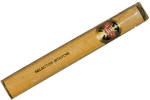
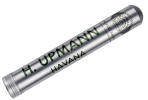
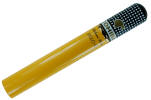
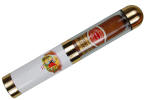
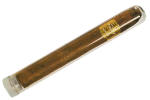
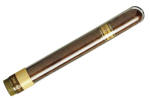
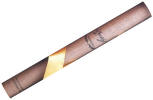
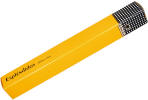
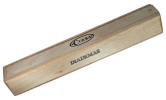
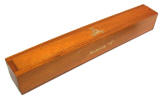
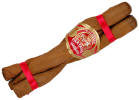
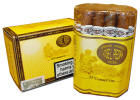
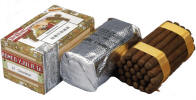

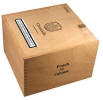
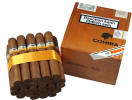






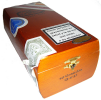
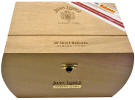
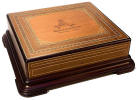


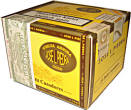
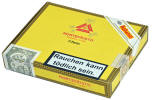
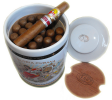

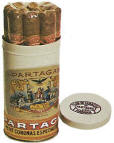


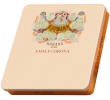














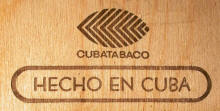
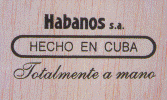
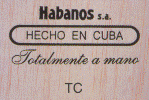
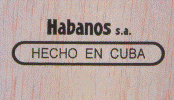
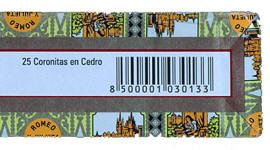
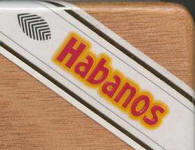



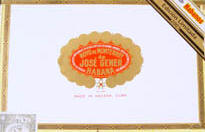
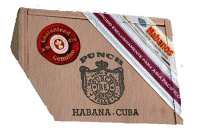



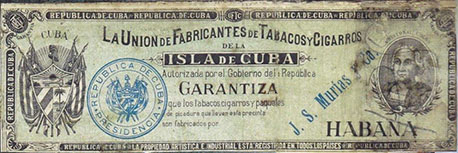

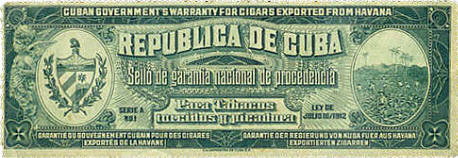

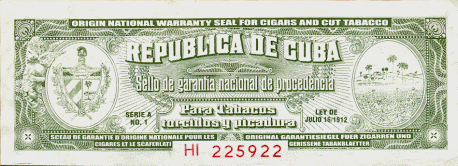

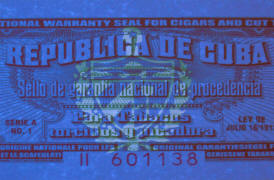
%20-%20copy%20-%20copy.jpg)


